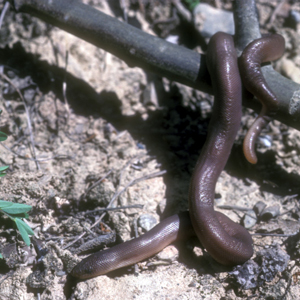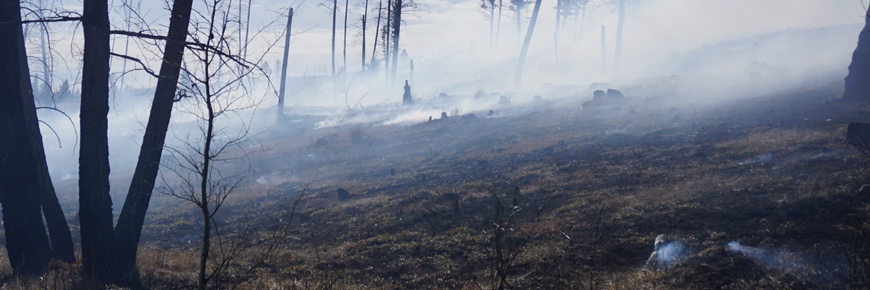
Northern rubber boa
Kootenay National Park
Quick facts
Grows 30 to 85 cm long
Eats rodents and small birds
Lifespan of up to 30 years
Status: Special concern

Yes, there are boa constrictors in Kootenay National Park! Don’t worry, they are not the man-eating kind; the biggest thing they can tackle is a mouse.
This snake resembles a rubber tube with a blunt tail and shovel-like snout. It’s hard to know which end is which and it has been dubbed the two-headed snake.
The northern rubber boa spends most of the day under cover, emerging at night to hunt small mammals and birds. It is found in rock-piles where it absorbs the warmth of the rocks and hides from predators. In Kootenay, it is found on rocky outcrops around the hot pools in Sinclair Canyon. Kootenay National Park is the northern limit of its range and the hot pools provide it with a rare and much needed source of heat.
Where to see
The northern rubber boa is nocturnal, rare and seldom seen. Most sightings occur around the hot springs area. Please do not stress the snake by picking it up.
Why is the northern rubber boa in danger?
The northern rubber boa has a ‘slow’ life history – a long life-span and a low reproductive rate. This makes it vulnerable to human disturbance. Threats to this species mostly occur outside the park and include:
- habitat loss due to development and agriculture, and
- mortality on roadways and railways.
What are we doing to help this species?
Kootenay National Park is restoring northern rubber boa habitat in the park by:
- increasing open habitats favoured by the boa using prescribed burning
- constructing a hibernacula (winter den) for rubber boas by piling logs and rocks in the foundation of the old superintendent’s house in the Sinclair Canyon Restoration area

Learn more
Species at Risk Public Registry – Species profile : Northern Rubber Boa
- Date modified :